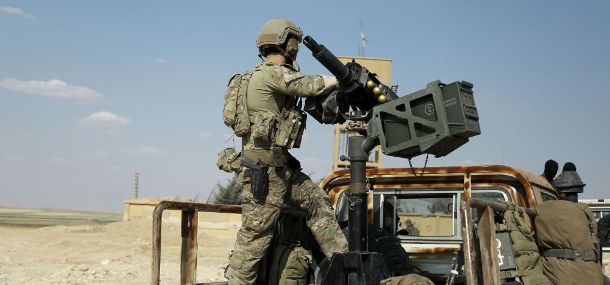Pentagon Reduces Funding for Syrian Democratic Forces and Free Syrian Army to $130 Million in 2026

The U.S. Department of Defense (Pentagon) has allocated $130 million in its proposed budget for 2026 to support the "Syrian Democratic Forces" and the "Free Syrian Army" within the training and equipping fund to combat ISIS, despite the shift in U.S. policy towards openness to the new Syrian regime led by President "Ahmed Al-Shar'a".
This step comes as part of Washington's continued support for the "ongoing defeat" of the extremist organization in northeastern and southeastern Syria, where the international coalition forces rely on U.S. funding to carry out their missions in cooperation with local forces.
U.S. support for the "Syrian Democratic Forces" has significantly declined in recent years, dropping from $156 million in 2024 to $148 million in 2025, before reaching $130 million in the proposed budget for the next year. This decline is attributed to a strategic shift in U.S. policy favoring the empowerment of the new Syrian state authority, while reducing reliance on non-state armed forces.
In this context, discussions are taking place between the "Syrian Democratic Forces" and the "Free Syrian Army" with the Syrian government regarding the possibility of gradually integrating them into the regular army as part of a broader political settlement aimed at reuniting the military institution under central leadership.
Despite the funding reduction, official documents confirm that Washington is not withdrawing from the Syrian scene but redirecting its support towards specific security issues, such as securing ISIS fighter detention centers managed by the "Syrian Democratic Forces," which hold the largest number of the organization's detainees in the world. The plan also focuses on enhancing security around the "Tanf" base and countering sleeper cells' movements in the desert areas and around the "Al-Hol camp."
This direction comes amid ongoing ISIS attacks against local forces and civilians, especially after the dramatic political changes that Syria witnessed following the fall of the Assad regime in November 2024.
The support plan includes training and equipping special units affiliated with the "Syrian Democratic Forces," enhancing the capabilities of internal security forces, and improving the efficiency of detention center guards. The "Free Syrian Army" continues its role in ground operations against ISIS in southeastern Syria, in addition to providing protection for coalition forces.
The number of supported elements from the fund is expected to increase by about a thousand additional fighters by the end of 2025, as part of Washington's efforts to keep pace with geopolitical shifts while maintaining pressure on the extremist organization.
The Pentagon has warned that any shortcomings in securing detention centers or countering active cells may revive ISIS in the region, posing new challenges to security stability in Syria and the region.